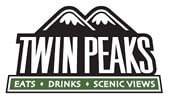Full-Service Restaurant Recruitment: Hiring for Fine Dining to Casual Chains
Strong restaurant staffing has never been more critical. Across the restaurant industry—from fine dining to casual franchises—operators face intense staffing challenges, rising turnover, and increasing pressure to balance quality with efficiency. More than just filling positions quickly, hiring the right people is about consistency, customer service, maintaining food safety, and preserving the guest experience that defines your brand.
Through this guide, we’ll explore best practices for restaurant hiring and recruiting strategies, offering insights into job descriptions, candidate experience, interview process design, and how partnering with a recruitment agency that specializes in the hospitality industry, such as Patrice & Associates, can improve hiring outcomes.
Whether you manage a Michelin-level dining room looking for an executive chef or a growing casual concept looking for an experienced line cook, success depends on attracting and retaining the right staff, supported by training programs, safety compliance, and a clear career path for every employee.
What Restaurant Recruitment Looks Like Currently
The modern restaurant hiring landscape looks very different from what it did even five years ago or before the pandemic. Following global workforce shifts, changing attitudes toward work-life balance, and new technological advancements, the entire hospitality industry must reassess how it recruits, trains, and retains restaurant staff.
The Modern State of Restaurant Hiring
Restaurant recruitment today demands a level of sophistication and precision that mirrors the operational complexity of running a restaurant itself. Post-pandemic shifts, labor shortages, and evolving guest expectations have changed how restaurant owners approach hiring strategy.
Recruiting in the hospitality industry now means engaging both active job seekers and passive candidates through social media, networking events, and digital platforms such as Indeed. It also means communicating a company culture that supports development, employee benefits, and consistent restaurant staff training.
From cooks to general managers, the candidate experience now shapes your employer reputation as much as the dining experience shapes your customer reviews. Restaurants that emphasize transparency, structured onboarding, and food safety and hygiene guidelines consistently outperform those with only reactive hiring models.
The Staffing Challenges Behind the Service
The hospitality industry continues to grapple with systemic staffing challenges. Many restaurants operate with leaner teams, relying on multitasking and cross-training to cover essential roles. Common pain points include:
- High turnover in hourly roles such as servers, bussers, and hosts.
- Limited availability of qualified line cooks and sous chefs despite the growth of culinary schools.
- Weak or outdated job descriptions that fail to define responsibilities or advancement opportunities, especially in management roles like kitchen manager, dining room manager, or even beverage manager.
- Insufficient use of applicant tracking systems (ATS) or hiring software to manage candidate pipelines.
- Gaps in staff training and safety compliance related to food safety and sanitation regulations.
Restaurants that address these challenges holistically by aligning hiring, training, marketing campaigns, and risk management see measurable improvements in retention, customer service, and control of their financial goals. The National Restaurant Association continues to report that restaurant staff training, recruitment, and turnover reduction remain top industry priorities.
How Technology and Data Improve Recruiting
Modern hiring tools allow restaurant operators to integrate recruiting efforts directly into restaurant operations. Applicant tracking systems, digital onboarding platforms, and scheduling tools now connect with POS systems and financial analysis dashboards, allowing management to track productivity, inventory levels, and labor efficiency simultaneously.
Smart use of technology helps hiring teams:
- Automate job postings across social media and job boards.
- Maintain consistent communication throughout the interview process.
- Analyze interview-to-offer ratios to improve hiring speed.
- Align hiring costs with financial statements and financial goals.
Recruitment data provides the insight needed to refine your hiring strategy, minimize compliance risks, and strengthen internal control systems across multiple locations or franchises.

Building the Foundation — Defining Roles and Job Descriptions
Strong recruitment begins long before you post a listing on Indeed or host a networking event. It starts with a clear understanding of what each position requires and how it supports your overall restaurant operations.
The Role of Clarity in Restaurant and Hospitality Recruitment
Every strong hiring process begins with clarity. A clear, compelling job description is one of the most powerful tools in your hiring strategy. It sets expectations for job responsibilities, outlines qualifications, and conveys company culture to prospective candidates.
Each job description should clearly define the role’s responsibilities, safety standards, and opportunities for growth. A well-structured posting typically includes:
- Title and Summary: Define whether the role is hourly, supervisory, or executive.
- Core Responsibilities: Core job responsibilities related to restaurant operations, food and beverage service, special events, inventory and project management, food safety monitoring, or guest relations.
- Required Skills and Qualifications: Detailed certifications or experience with hygiene and food safety regulations (like ServSafe or OSHA), educational background, and overall customer service experience level.
- Benefits: Emphasize employee benefits, advancement opportunities, and training programs.
- Safety and Compliance: Reference food safety regulations, sanitation requirements, and relevant National Restaurant Association standards.
- Company Profile: A statement about the company’s values and service standards.
When crafted carefully, job descriptions function as both an operational guide and a recruitment marketing campaign that communicates professionalism, opportunity, and organizational purpose.
Example:
The Assistant Manager oversees front-of-house operations, ensures compliance with food safety and hygiene guidelines and codes, manages staff schedules, and reports directly to the General Manager. Familiarity with POS systems, financial statements, inventory management systems, and risk management practices is essential.
Poorly written ones, on the other hand, discourage qualified candidates and create confusion during the interview process.
Fine Dining vs. Casual Dining Roles
Recruiting in the restaurant and hospitality industry varies widely depending on concept and service style. Fine dining operations tend to emphasize experience, precision, and artistry, while casual or franchise environments prioritize volume, consistency, and operational discipline.
A fast-food franchise won’t be asking about a potential kitchen manager’s knife skills, for example, while a luxury dining establishment will expect it from its Executive Chef candidates.
| Category | Typical Roles | Focus Areas | Recruitment Considerations |
| Fine Dining | Executive Chef, Sous Chef, Sommelier, Pastry Chef, General Manager | Culinary innovation, presentation, service excellence | Seek candidates from culinary schools or competitors with strong service reputations. Highlight creative freedom in menu development and professional recognition. |
| Casual / Family Dining | Server, Line Cook, Bartender, Assistant Manager, Host | Speed, teamwork, and communication | Stress culture, training, and advancement paths. Promote benefits and schedule flexibility. |
| Quick Service / Franchise | Shift Leader, Crew Member, Drive-Thru Manager | Volume management, POS system efficiency, and compliance | Emphasize the importance of structured training manuals, food safety standards, and consistent risk management. |
Matching the recruitment approach to the environment reduces turnover and enhances alignment between brand expectations and employee capabilities.
Aligning Job Descriptions with Culture and Compliance
A great job description should convey your values, not just the needs of your restaurant operations.
- If your restaurant prioritizes safety and service, be sure to mention adherence to sanitation regulations, food safety procedures, and training programs in every posting.
- For management roles, describe how leaders are expected to model company culture, manage risk, and maintain internal control standards across daily restaurant operations, from POS device accuracy to financial reporting.
- Including references to leadership development, employee recognition, or referral programs demonstrates that your organization values growth and engagement, attracting candidates who see the hospitality industry as a long-term career rather than a short-term job.

Recruiting Strategies that Work Across Restaurant Types
Recruiting approaches might vary between fine dining, casual dining, and quick-service environments; however, the foundations remain universal: plan strategically, utilize technology wisely, and communicate your brand identity clearly. The following best practices can help restaurants of any scale to streamline hiring and build stronger teams to deliver high-quality customer service.
Plan and Develop Your Restaurant Hiring Process
Effective restaurant and hospitality recruiting begins long before the first job ad goes live. Planning your restaurant hiring process ensures each step—from candidate sourcing to final offer—is deliberate, consistent, and aligned with your operational goals.
A well-structured hiring plan includes:
- A defined recruitment timeline for each position type.
- Clear communication channels between hiring managers and interviewers.
- Standardized job descriptions that reinforce compliance, food safety, and performance expectations.
- A candidate evaluation process that includes both skill and culture fit assessments.
This proactive approach saves time, minimizes turnover, and creates consistency across multiple locations or departments. When your hiring strategy is codified into policy, supported by training manuals, interview templates, and feedback forms, every candidate receives the same professional experience, reflecting positively on your restaurant’s reputation.
Create a Professional Careers Page
Your careers page is often the first impression prospective employees have of your brand. In the competitive restaurant industry, it serves as both a recruitment and marketing campaign that forms candidate expectations. A professional careers page should communicate your company culture, training programs, and employee benefits clearly and visually.
Strong examples include:
- A welcoming introduction describing your restaurant’s mission, values, and guest philosophy.
- Photos or short videos highlighting your team, kitchen, or front-of-house environment.
- Clear navigation for job openings with links to current positions, job descriptions, and online application forms.
- Information about training programs, food safety practices, and growth opportunities.
Whether your restaurant is an independent concept or part of a franchise network, your careers page should make candidates feel that joining your team means joining a workplace committed to safety, quality, and professional growth.
Patrice & Associates often helps restaurant operators refine career site messaging to align with brand tone and attract top talent.
Implement an Applicant Tracking System (ATS)
For busy restaurant managers, an applicant tracking system (ATS) is a game-changer. It automates job postings, centralizes candidate communication, and simplifies the interview process, particularly when managing high-volume recruiting across multiple roles or locations.
Key benefits of implementing an ATS include:
- Streamlined job postings across major platforms and social media channels.
- Automated resume sorting and keyword matching for faster screening.
- Real-time communication with candidates via email or SMS, ensuring a better candidate experience.
- Integrated reporting to track interview stages, offer letters, and time-to-hire metrics.
This level of organization allows restaurant operators to focus less on administrative logistics and more on cultivating leadership, team morale, and customer service excellence.
Leverage Employee Referrals and Networking
While digital platforms dominate recruitment today, referrals remain one of the most reliable ways to find quality candidates. Implementing a structured referral program encourages your staff to participate in the recruiting process.
Successful referral programs often include:
- Incentives for employees who refer qualified candidates hired after a set period.
- Recognition in team meetings or newsletters to reinforce engagement.
- Integration with your automated systems to track referral performance.
Beyond referrals, networking events and industry job fairs remain valuable for sourcing talent with niche experience, especially executive chefs, dining room managers, food safety specialists, and customer service professionals seeking long-term careers in the hospitality industry. Establishing a presence at these events reinforces your brand reputation and builds your future hiring pipeline.
Interviewing and Selection Best Practices
Once you’ve identified potential candidates, the next step is refining your selection process. A structured, transparent, and technology-supported interview process enhances both efficiency and candidate experience, ensuring your team hires not only the most qualified but also the most compatible talent.
Design a Structured Interview Process
Consistency is critical in restaurant recruiting. Structured interviews ensure fairness, minimize bias, and allow hiring teams to compare candidates objectively. Each interviewer—whether a general manager, assistant manager, or peer interviewer—should have a defined role and a list of standardized questions relevant to the position.
Best practices include:
- Creating separate question sets for front-of-house, back-of-house, and management roles.
- Assessing both technical ability (cooking, POS system proficiency, or financial control) and interpersonal skills (communication, teamwork, customer service).
- Using evaluation forms to rate each candidate’s qualifications and cultural alignment.
Structured interviewing also improves compliance documentation, helping your restaurant demonstrate professionalism and risk management readiness during audits or HR reviews.
Automate Your Interview Scheduling
Coordinating interviews in a busy restaurant environment can be a logistical challenge. Automating your interview scheduling through hiring software or your ATS eliminates unnecessary back-and-forth emails and missed opportunities.
Automation tools allow candidates to:
- Select available time slots based on real-time calendar integrations.
- Receive confirmations and reminders automatically.
- Reschedule when conflicts arise without disrupting operations.
For hiring managers, automated scheduling means fewer administrative tasks, fewer communication delays, and a more polished candidate experience. It also allows leadership teams to focus on assessing candidate fit rather than coordinating logistics.
Conduct Role-Specific Assessments
Every position in a restaurant has unique demands. Integrating job-specific assessments helps evaluate whether candidates possess the necessary technical and soft skills to thrive in your environment.
Examples include:
- Line cooks and chefs: Practical cooking demonstrations or prep tests evaluating speed, prep, knife skills, sanitation awareness, and presentation.
- Servers and bartenders: Role-play scenarios that assess service style, menu, and culinary trend knowledge, and upselling skills.
- Managers: Case study interviews covering team leadership, inventory control, and risk management.
These evaluations complement the traditional interview and give candidates a chance to demonstrate their strengths directly, improving selection accuracy and reducing turnover risk.
Ensure Clear Communication Throughout the Process
From first contact to offer letter, transparent communication defines your employer brand. Candidates value prompt updates, feedback after interviews, and clarity around timelines and compensation.
Simple actions like following up within a set timeframe or sending a personalized thank-you email contribute to a positive candidate experience and increase offer acceptance rates.
When finalizing hiring decisions, document all communication in your ATS for record-keeping and compliance. This not only improves efficiency but supports consistent messaging across your team, reinforcing your restaurant’s reputation as a professional, organized, and employee-focused workplace.

Reducing Turnover Through Smart Onboarding and Training
A successful hire is only the beginning. To retain top talent in a competitive restaurant industry, leaders must invest in structured onboarding and continuous training. Well-organized programs reduce turnover, strengthen company culture, and ensure that staff can deliver a consistent guest experience aligned with brand standards.
Establish a Comprehensive Onboarding Framework
Effective onboarding provides clarity and confidence from day one. Well-established candidate expectations about procedures, values, and responsibilities are far more likely to result in long-term hires.
A strong restaurant onboarding process should include:
- A welcome orientation that introduces the restaurant’s mission, culture, and organizational structure.
- A tour covering safety zones, kitchen layout, POS systems, and sanitation stations.
- Distribution of a training manual outlining key job responsibilities, operational procedures, and food safety standards.
- Scheduled check-ins during the first 30, 60, and 90 days to address questions and reinforce performance feedback.
When onboarding includes mentorship and open communication, employees feel supported, empowered, and connected to the broader vision of the organization.
Build Role-Specific Training Programs
Every position requires a different combination of technical and interpersonal skills. In the same vein as role-specific assessments during the interview process, investing in targeted training programs helps team members develop proficiency while reinforcing consistency across shifts and locations.
Examples of effective training elements include:
- Front-of-House Staff: Customer service training, handling POS devices, managing table flow, and upselling strategies.
- Back-of-House Team: Cooking procedures, knife skills, station management, food safety regulation compliance, and sanitation protocols.
- Management Roles: Leadership development, performance evaluation, project management, restaurant operations, menu engineering, and financial control principles.
Restaurants can supplement in-person training with digital learning platforms, instructional videos, and cross-training modules to enhance their offerings. Regular refreshers not only improve performance but also maintain compliance with evolving food safety regulations.
Reinforce Food Safety Regulation Compliance
Adherence to sanitation and food safety standards and laws is non-negotiable in restaurant operations. Incorporating compliance education into training demonstrates your commitment to both staff and guests.
Train every employee on:
- Local and national food safety regulations.
- Proper handling of perishable ingredients and allergen protocols.
- Temperature control, cleaning schedules, and documentation requirements.
- Procedures for internal audits and corrective action reporting.
Aligning these efforts with National Restaurant Association food safety practices reduces operational risk while reinforcing a culture of accountability and excellence.
Link Training to Retention and Advancement
The best training programs serve dual purposes: improving performance and building future leaders.
Establishing clear career paths motivates employees to grow within the company, lowering turnover and improving morale.
Simple initiatives such as internal promotion policies, cross-departmental learning opportunities, and continuing education support show staff that their development is valued.
When employees understand that mastering food safety, customer service, and operational skills can lead to advancement, retention naturally follows.
Contingent vs. Retained Search — When to Use Each for Restaurant Staffing
Choosing between contingent and retained search models depends on your restaurant’s immediate hiring needs, position level, and long-term talent goals. Both recruitment methods offer distinct advantages, and using them strategically can strengthen your entire workforce plan.
Understanding Contingent Search
Contingent recruiting operates on a pay-for-performance basis, where employers only pay fees when a candidate is successfully hired. This flexible model is ideal for fast-paced restaurant environments that need to fill mid-level or multiple roles quickly, such as general managers, sous chefs, or front-of-house managers (dining room managers or maître d’hôtel).
Benefits of contingent search include:
- No upfront cost—payment occurs only upon a successful hire.
- Access to wide candidate networks, including both active and passive talent.
- Faster turnaround times for urgent openings.
- Scalability for multi-location hiring or seasonal staffing surges.
Patrice & Associates recruiters specializing in contingent search leverage applicant tracking systems and hospitality databases to match candidates efficiently while maintaining professionalism and cultural alignment. Their recruiters manage every stage, from job postings and resume vetting to interview coordination and reference checks, ensuring a seamless experience for both employers and candidates.
Understanding Retained Search
Retained search is a partnership model best suited for executive or leadership-level placements where long-term impact, confidentiality, and cultural alignment are paramount. Employers engage one exclusive firm for the duration of the search, often paying an initial retainer fee.
This approach is ideal for roles such as executive chef, regional manager, or vice president of operations, positions that directly influence brand, pricing strategy, and financial performance.
Advantages of retained search include:
- Exclusive partnership and dedicated recruiter focus.
- Comprehensive candidate evaluations, including behavioral and psychometric assessments.
- Confidential handling of leadership transitions or replacements.
- Higher placement success rates and long-term retention outcomes.
Patrice & Associates’ retained search process integrates global candidate sourcing, cultural fit analysis, and onboarding support. This model is particularly effective for brands planning expansion or succession transitions within multi-unit restaurant groups.
When to Use Each Search Model
The choice between contingent and retained search depends on position level, timeline, and risk tolerance. Many restaurant groups benefit from a hybrid approach, which means using contingent search for mid-level or hourly management hires and retained search for executive or strategic roles.
| Situation | Recommended Model | Rationale |
| Multiple management vacancies across several locations | Contingent Search | Prioritizes speed and flexibility while maintaining quality. |
| Hiring an Executive Chef or Regional Director | Retained Search | Ensures discretion, cultural fit, and strategic alignment. |
| Rapid expansion or franchise openings | Combination | Leverages scalability for staffing volume while maintaining leadership quality. |
Both models can complement each other within a unified staffing strategy. Patrice & Associates offers both approaches under one brand umbrella, providing restaurants with the flexibility to adapt their recruiting model without compromising consistency or service quality.

The Patrice & Associates Advantage in Restaurant Recruitment
Hospitality hiring demands industry insight, empathy, technology, and precision—powered by a people first company mindset and a clear mission.
Patrice & Associates brings over three decades of proven expertise to the recruiting process, connecting people with high-impact opportunities across every level of the hospitality world—from front-of-house professionals to executive leaders shaping the future of brand reputation and patron care.
Decades of Industry Expertise
With over 35 years of experience, Patrice & Associates is a recognized name across the country. Recruiters understand the realities of daily operations—fast pace, compliance expectations, and the importance of guest-facing excellence delivered with care.
Their background spans independent fine dining concepts to multi-unit brands. This breadth helps them find the right person with the capabilities, attitude, and values that truly fit your environment—and make a meaningful difference day after day.
Nationwide Reach, Local Insight
A continent-wide network gives hiring managers accessing talent across every area, with localized insight and national reach. One coordinated contact streamlines communications and maintains alignment.
Patrice recruiters keep strong connections with culinary schools, associations, and hospitality organizations—constantly discovering opportunity pathways for qualified individuals in front-of-house, back-of-house, and corporate roles. Many candidates arrive through referrals, alumni networks, and working professionals looking for the right place to contribute and grow.
High-Touch Recruiting and Candidate Experience
The approach is personal and people-centered. Before sourcing, the team clarifies values, leadership preferences, and operational needs. Every person moves through a structured evaluation that includes situational conversations, reference verification, background review, and alignment checks.
This humane, transparent model improves retention and cohesion while delivering a positive journey for candidates—supporting success and long-term earning potential. The outcome: happier hires, owners who feel supported, and measurable impact on the operation.
Data-Driven Recruiting Powered by Proven Systems
Behind the human touch are disciplined resources—applicant tracking, structured workflows, and analytics that reveal what happened in past campaigns and what’s working now. These systems save time, keep communications organized, and help stakeholders choose the best way forward.
It’s precision plus empathy: scalable for expansion, reliable for multi-location groups, and flexible enough to adapt quickly when opportunities arise.
The ACTIVE Core Values
ACTIVE is the heart of every engagement:
- Accountability — Follow-through that protects outcomes and earned trust.
- Collaborative — Close partnership with owners, managers, and HR.
- Trustworthy — Discretion, professionalism, and transparency.
- Innovative — Continual improvement through better methods, learning, and refined processes.
- Valuable — Tangible results: retention, advancement, and brand success.
- Empathetic — Respect for every person, every time.
These principles are why so many partners have found a long-standing home with Patrice & Associates—and why those partnerships grow stronger year after year.
Key Takeaways — Sustainable Hospitality Hiring
- Plan with clarity. Document workflows, responsibilities, and role definitions that reflect your values. Clear expectations, transparent benefits, and purposeful messaging help the right people find the right opportunities.
- Use the right resources. Modern platforms organize outreach, self-scheduling, and communications, reducing errors and freeing time for high-value conversations.
- Advance and retain. Ongoing learning, compliance education, and mentoring support progression. Offering free internal training, access to certifications, or degree pathways can elevate careers and strengthen loyalty.
- Match the model to the need. Use contingent sourcing for fast placement and retained engagements for confidential leadership work. Blending approaches provides flexibility without sacrificing quality.
- Lead with values. Clear communication, thoughtful onboarding, and recognition programs foster belonging. When people feel happy and supported, patrons notice the difference.
Partner with Patrice & Associates — Your Hospitality Hiring Experts
Winning in hospitality means aligning brand promise with the right people. The right partner helps you identify talent that fits your environment, strengthens standards, and elevates patron experiences.
For more than 35 years, Patrice & Associates has helped operators across the country locate motivated professionals—general managers, culinary leaders, compliance specialists, and corporate contributors—who bring energy and excellence to every day.
Customized contingent and retained programs add structure, clarity, and integrity to each engagement—reducing turnover, supporting advancement, and reinforcing values. From fine dining to large casual concepts, the approach improves outcomes—one outstanding hire at a time.
Ready to Move Forward?
Let’s get you to GREAT. Connect today to explore how a people-centered, value-driven process can strengthen your workforce, reduce churn, and amplify brand reputation.
Visit www.patriceandassociates.com to connect with a recruiter near you and explore new opportunities that make your operation feel more like home—a place that fits.
Back







